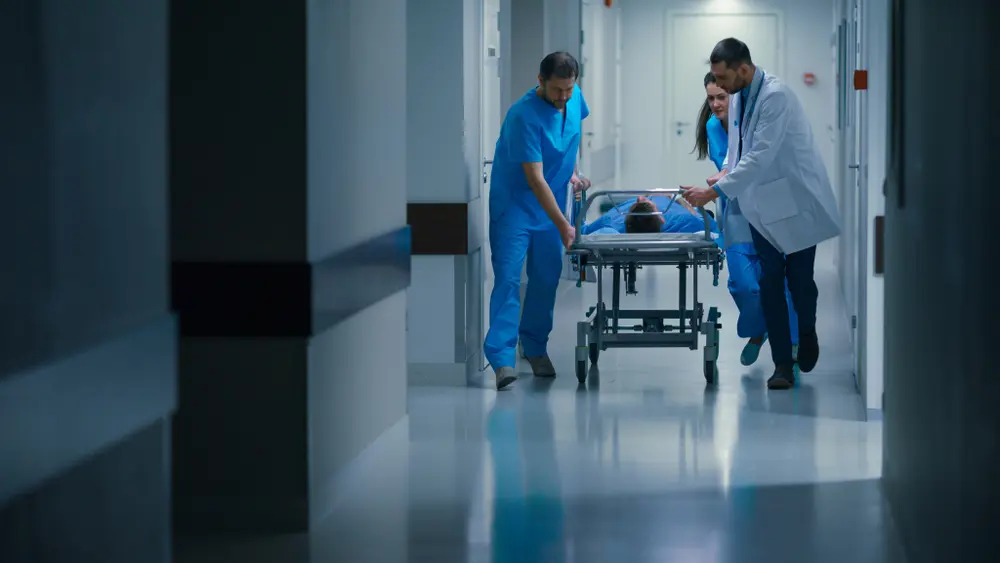


While most cases of hypertension (or high blood pressure) can be managed with proper care and treatment, there are occasions when hypertension escalates into a dire medical situation. Hypertensive emergencies (as they are medically called) demand immediate attention and intervention to prevent life-threatening complications.
A hypertensive emergency arises when blood pressure reaches dangerously high levels, often accompanied by acute organ damage. It can become a life hazard.
The signs and symptoms of a hypertensive emergency are often dramatic and sudden. Severe headaches, chest pain, shortness of breath, vision changes, and neurological deficits can be indicators. Knowing how to differentiate between “hypertensive urgency,” “hypertensive emergency,” and “hypertensive crisis” is also valuable.
Let’s explore more about these extreme blood pressure conditions – because the ability to recognize the signs and symptoms early will also increase the chances of summoning immediate medical assistance and saving valuable lives.
According to Mayo Clinic, hypertension-related exigencies can, in the first instance, be of two types, depending on intensity. Read the information below to try and decipher if you have a hypertension urgency or emergency at hand. But if in doubt, always treat it as an emergency.
Hypertension urgency is when blood pressure is severely elevated but does not cause immediate organ damage. The blood pressure levels in hypertension urgency are typically very high but not dangerously high compared to a hypertensive emergency.
Symptoms may include severe headache, shortness of breath, nosebleeds, severe anxiety, or chest pain. While urgent medical attention is still necessary, the response time can be within hours to a day, as it is not an immediate danger-to-life situation.
A hypertension emergency occurs when severely elevated blood pressure leads to acute organ damage or poses an immediate threat to health. Blood pressure levels in a hypertensive emergency are extremely high, often at 180/120 mm Hg.
Symptoms may include severe headache, chest pain, shortness of breath, visual changes, neurological deficits, signs of heart attack or stroke, or acute kidney injury. Immediate medical attention is required in a hypertensive emergency to prevent further organ damage and potentially life-threatening complications.
It’s vital to know that if you delay acting on a hypertension emergency, you will start to see a fast progression to greater distress. Here is what to expect:
As mentioned earlier, this is the first stage when the situation turns dangerous for life, and action must be taken quickly. It is characterized by severe high blood pressure (typically systolic pressure at 180 mm Hg or diastolic pressure at 120 mm Hg). This condition requires immediate medical intervention to prevent further complications and organ failure.
According to Cleveland Clinic, this stage occurs when blood pressure reaches exceptionally high levels. A hypertensive crisis is typically defined as a systolic blood pressure greater than 180 mm Hg or a diastolic blood pressure greater than 120 mm Hg. In such cases, the problems acquire the dimensions of a crisis.
Extremely high blood pressure may be accompanied by symptoms or signs of acute organ damage, such as severe headache, chest pain, shortness of breath, visual changes, neurological deficits, or signs of heart attack or stroke.
Blood pressure levels considered to be in crisis mode may manifest alongside heart failure symptoms such as severe shortness of breath, rapid heartbeat, coughing up frothy pink sputum, and extreme fatigue.

According to Zawn Villines, writing in Medical News Today, in a hypertensive emergency, the signs and symptoms can vary depending on the organs affected by the high blood pressure. If you have a hypertensive patient at home and would like to be prepared in case of an emergency, keep this checklist below handy:
According to the American Heart Association (AHA), if someone you know is experiencing a hypertensive emergency, it is crucial to take immediate action. Here are some steps to follow:
Dial the emergency services number in your country to seek immediate medical assistance through first medical responders or an ambulance. Inform the operator that you are dealing with a hypertensive emergency and describe the symptoms being experienced.
While waiting for medical professionals to arrive, help the person stay calm and comfortable. Encourage them to sit or lie down in a supported position to reduce strain on the heart.
If you have any home gadgets, check the person’s vital signs, including blood pressure, heart rate, and respiratory rate. Keep track of any changes in their condition and relay this information to the emergency responders upon arrival.
Hypertensive emergencies often require prompt medical intervention. Do not attempt to manage the situation solely on your own. It is crucial to receive professional care as soon as possible.

No, a hypertensive emergency should not be treated at home. According to Darla Burke, writing in Healthline, a hypertensive emergency is a critical medical situation that requires immediate medical intervention and monitoring in a hospital setting. It is not advisable to attempt to manage a hypertensive emergency on your own or at home.
In an emergency, remember to mention to the medical help that arrives if the patient has one or more chronic health illnesses concurrently, such as obesity, cholesterol, diabetes, and hypertension (along with other hereditary factors). These can all have a multiplicative effect on the heart.
Be ready also to inform the doctors, first responders, or ambulance teams about the medications and other protocols being followed, i.e., regimens for management of cholesterol levels, control of blood sugar levels, treatment of obesity symptoms, and diabetes treatment practices.
If you have a hypertension patient at home, it’s always better to educate yourself about the likelihood of emergencies and what symptoms to beware of. Also, go to the doctor for regular screenings and use home blood pressure monitors between doctor visits. Remember that a hypertension emergency can affect several vital organs, including the heart. A good dictum for all homes with high blood pressure patients is this. Stay aware. Stay alert. Stay heart-healthy. Be a Zinda Dil.